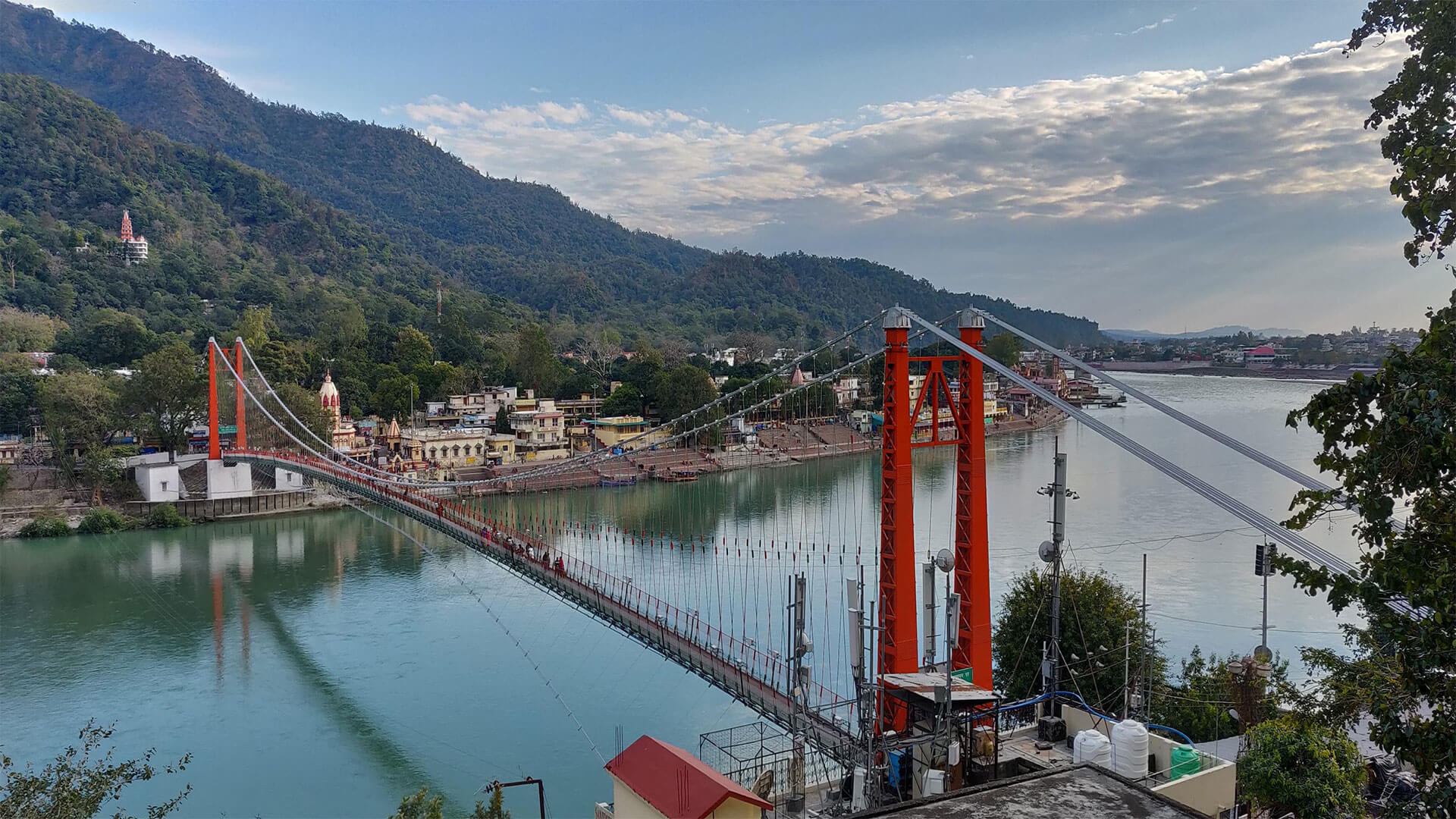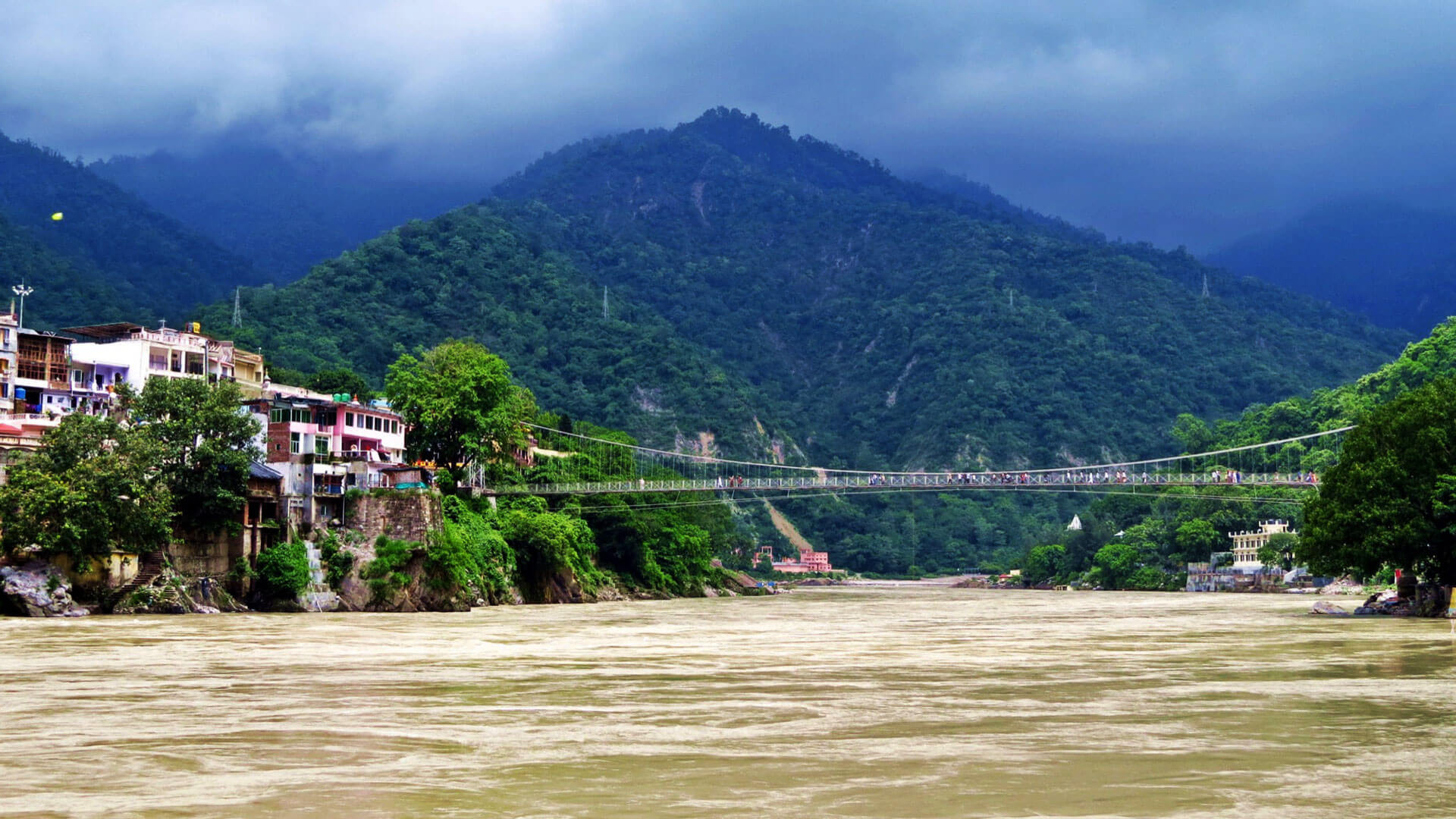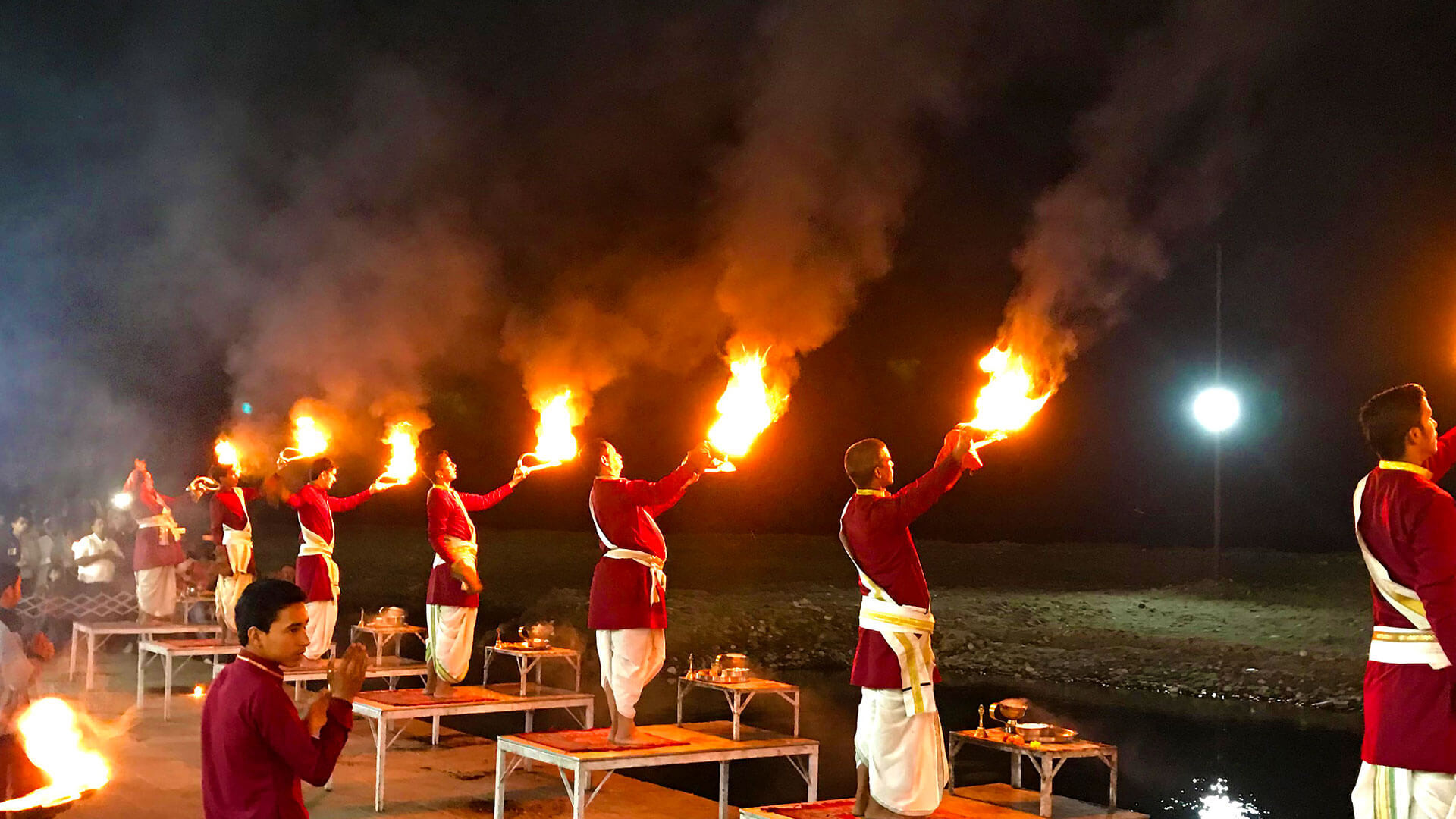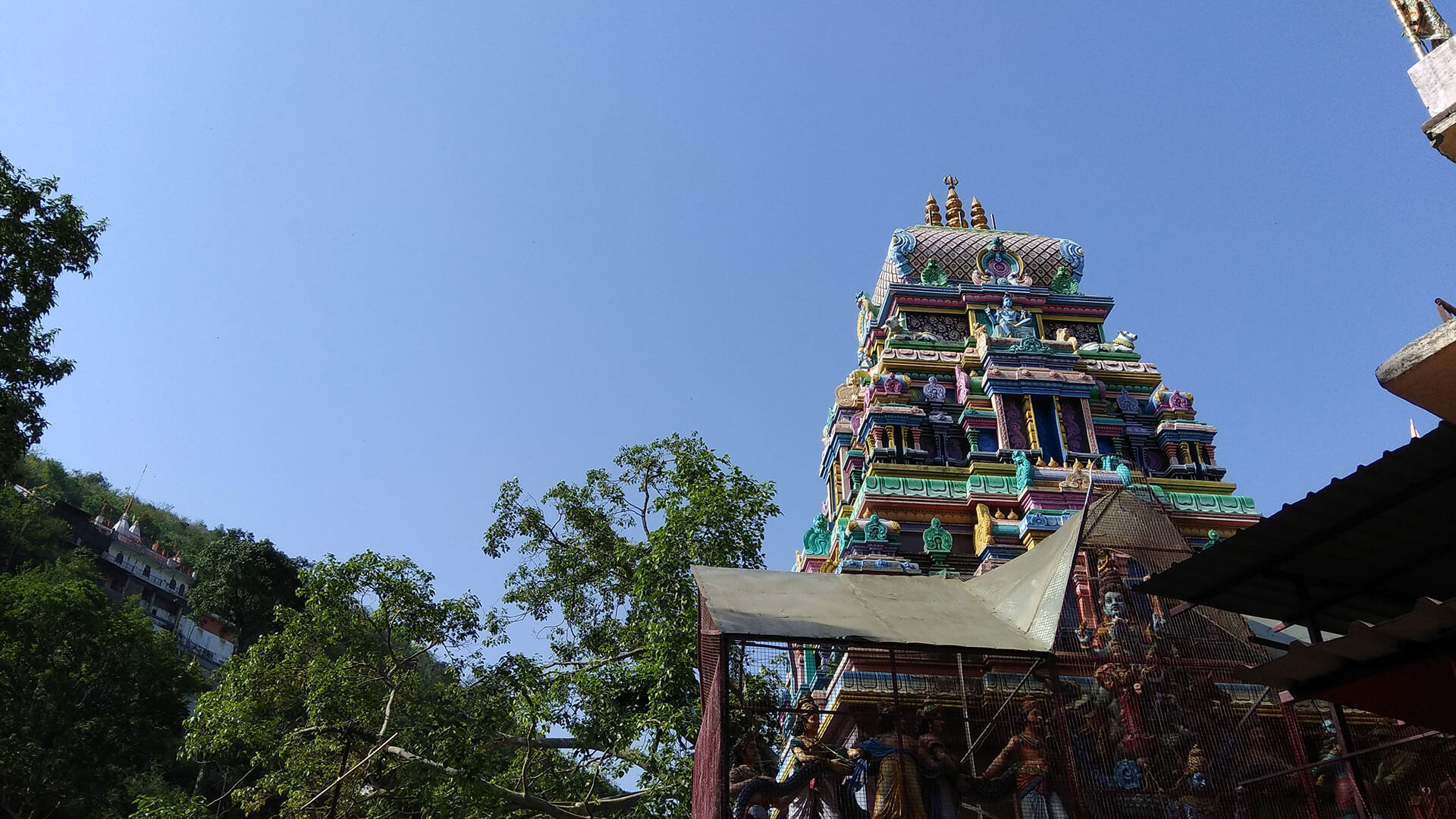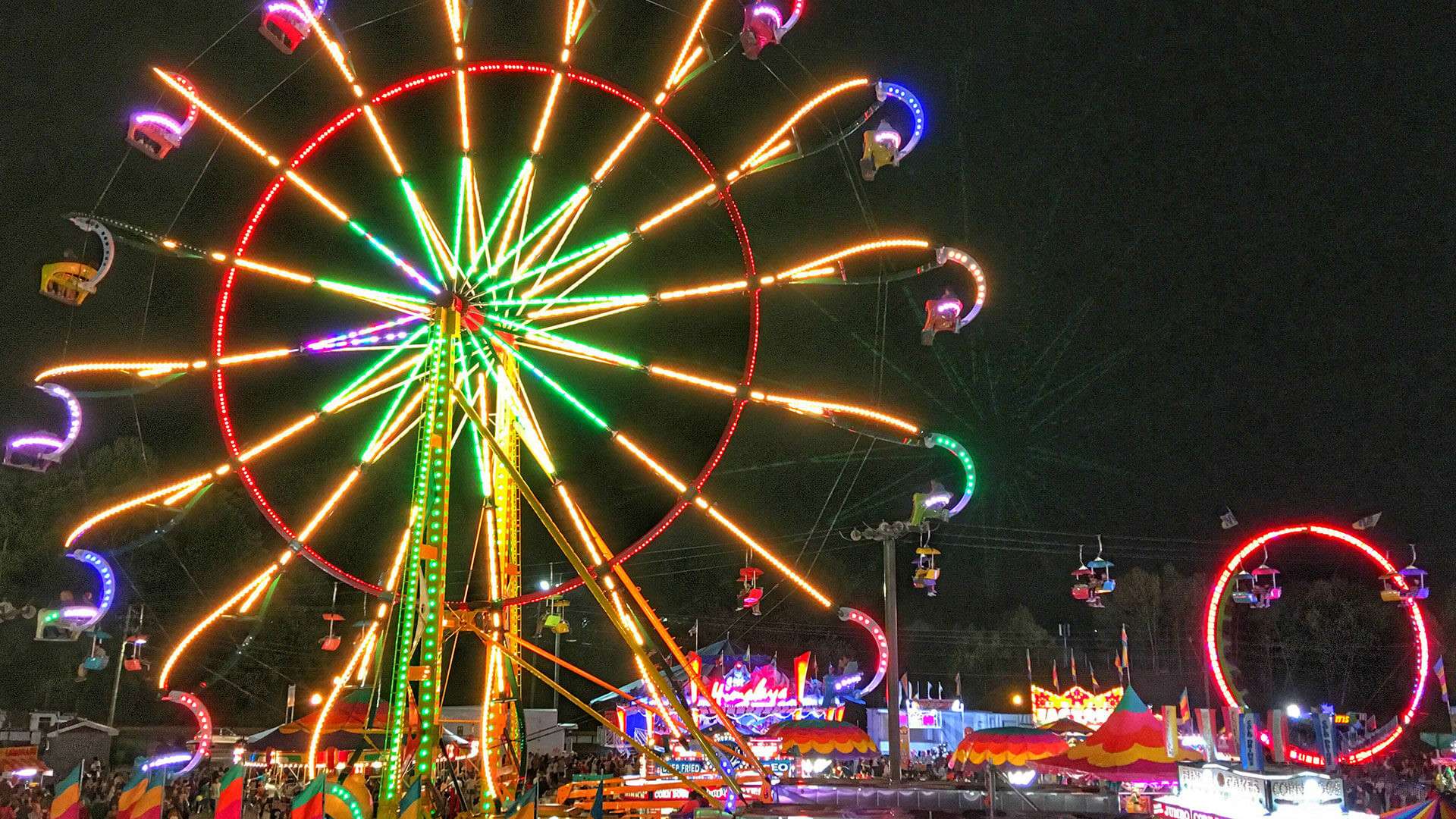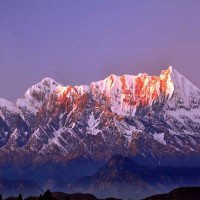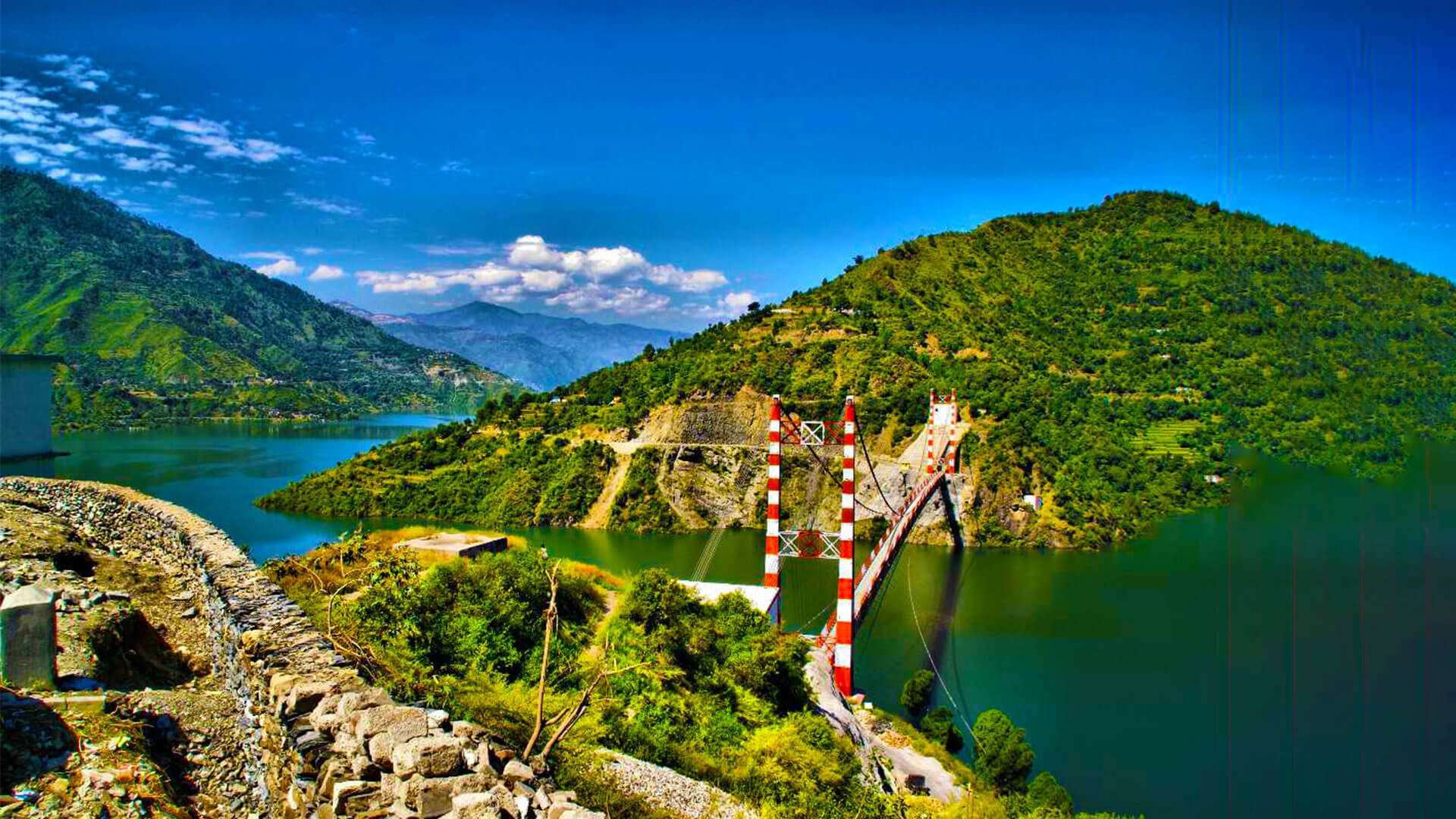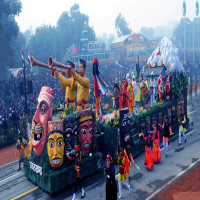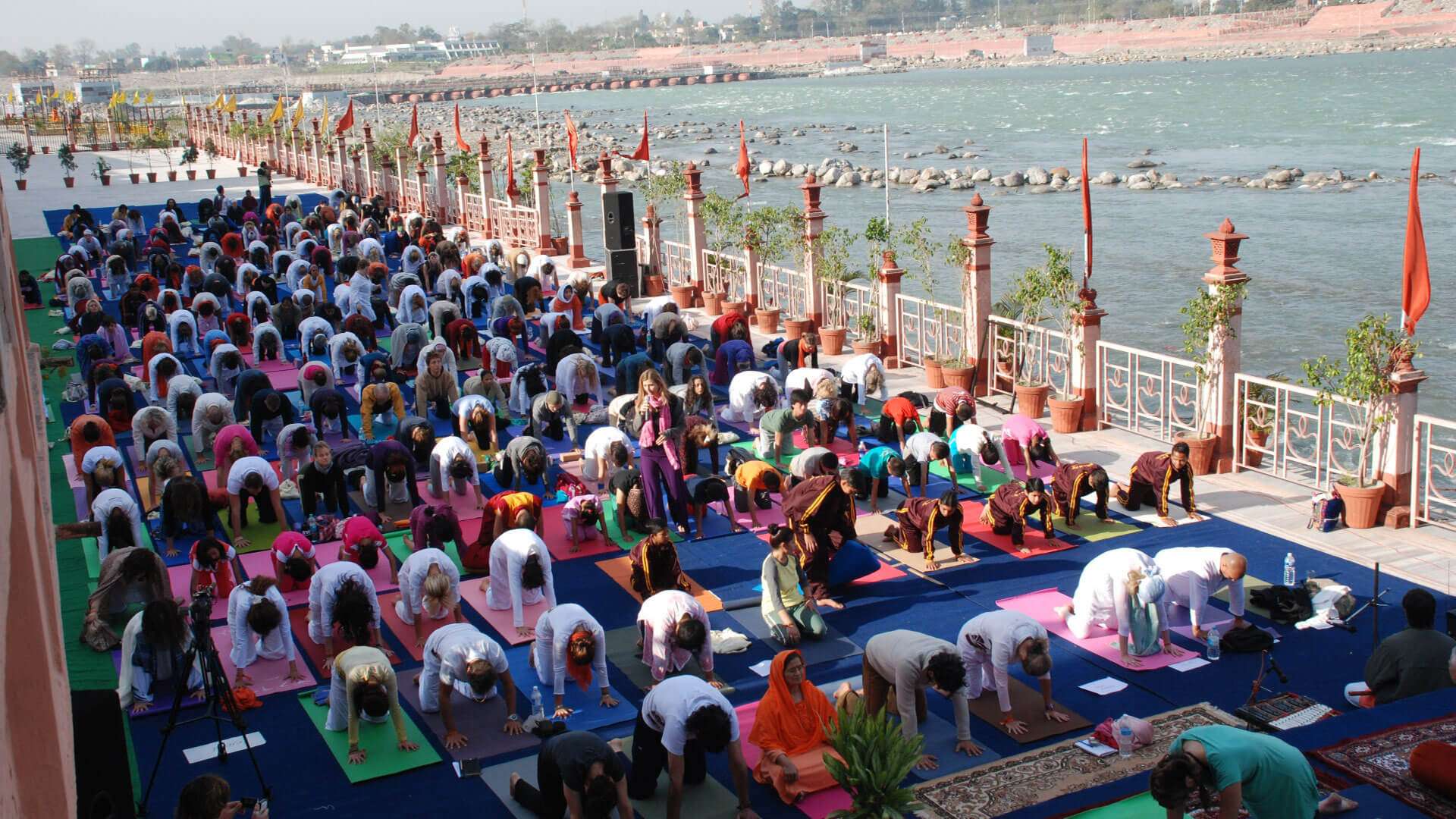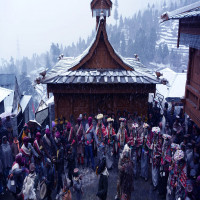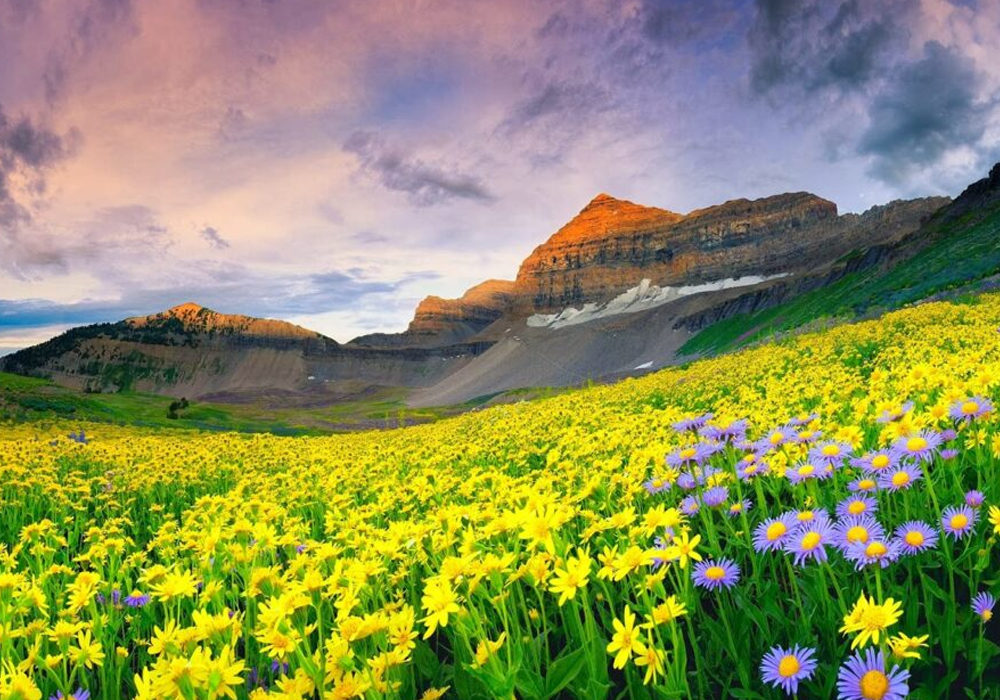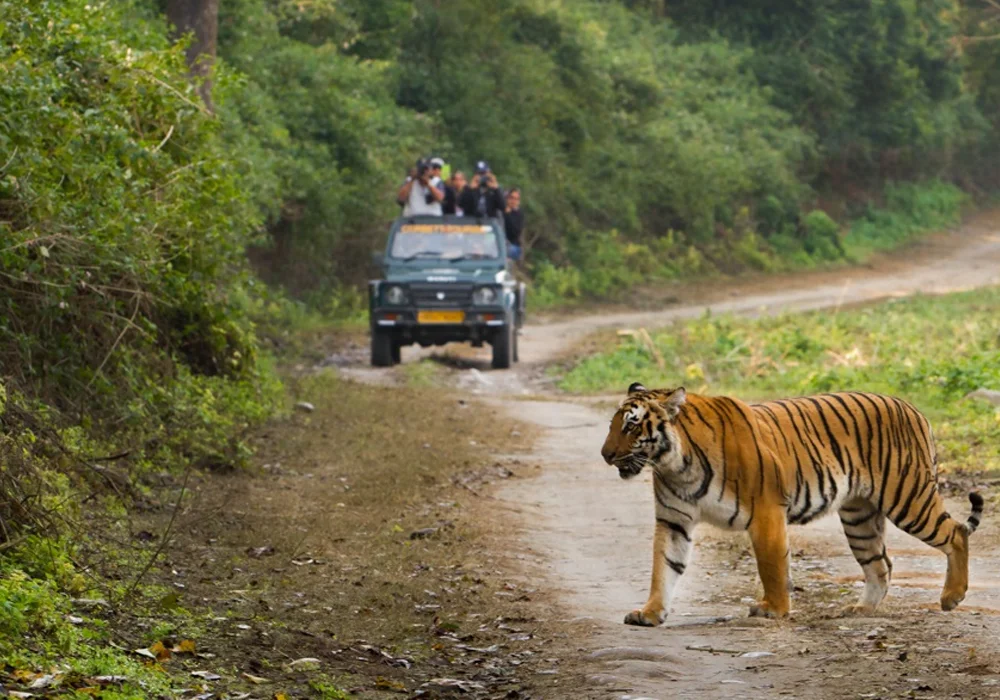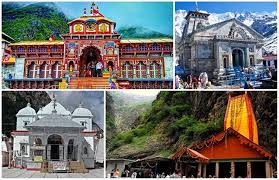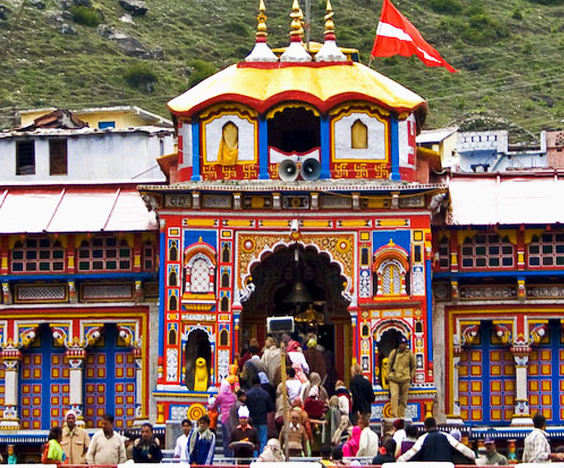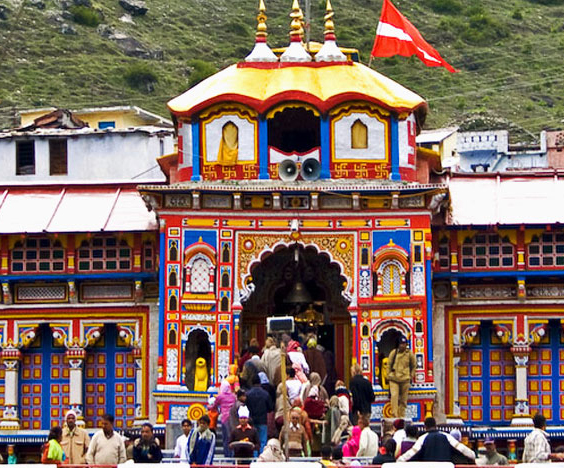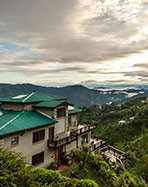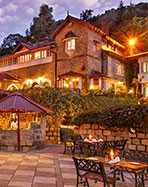Have you ever visited a place that simultaneously makes you feel peaceful and amazed? Badrinath Temple is one such place in Uttarakhand's Garhwal region, surrounded by the beautiful Himalayas. This temple is a special place for people who follow Hinduism because it is dedicated to Lord Vishnu. People come here to pray and see the beautiful nature around them. The story of Badrinath Temple is filled with interesting myths and history. It's famous for its beautiful setting and spiritual atmosphere. The best time to visit is from May to November. You can get there by road, and the nearest airport is in Dehradun, called Jolly Grant Airport. Let's explore this holy place. Read out more in the introduction!
Situated in the Chamoli district of Uttarakhand, Badrinath is perched on the Garhwal hill tracks near the Alaknanda River. Known for its Badrinath Temple dedicated to Lord Vishnu, Badrinath is one of the four Char Dham and Chota Char Dham yatras and is one of the holiest sites for Hindus.
Best Time To Visit Badrinath Temple In 2024
The best time to visit Badrinath Temple is during the summer months, from May to June when the weather is pleasant and suitable for pilgrimage. Avoid the monsoon season from July to September due to heavy rainfall, and plan your trip early to mid-autumn from October to November to witness the mesmerising autumn foliage.
Summer months offer clear skies and moderate temperatures, ideal for exploring the temple and surrounding areas. Pilgrims can enjoy the scenic beauty of the Himalayas during this time. However, accommodations may get crowded, so making reservations in advance is advisable.
History of Badrinath Temple
The Tirthasthana derived its name from the local word Badri which means wild berry when translated in English. It is widely believed that when Lord Vishnu sat in penance while roaming in these mountains, his consort Goddess Laxmi took the form of a wild berry tree and provided shade to Lord Vishnu and protected him from the harsh sun. Not only a dwelling place of Lord Vishnu, but Badrinath is also home to countless pilgrims, sages, and saints who meditate here to find enlightenment.
Major Attractions of Badrinath
1. Badrinath Temple
Located near the Alaknanda River, the temple of Badrinath is dedicated to Lord Vishnu. It is one of the Chota Char Dham, perched on the Garhwal hill tracks. It is home to a black idol of Lord Vishnu and is one of the most visited pilgrimages in North India and badrinath temple height in feet 10,279.
2. Charan Paduka
Located 3 kilometers away from Badrinath, Charan Paduka is a rock with imprints of what is believed to be Lord Vishnu’s footprints. Hindus believe that Lord Vishnu set his foot here which can be reached after an arduous trek.
3. Vasudhara Falls
Some 9 kilometers away from Badrinath, there is a quaint village called Mana, which is home to the gushing Vasudhara Falls. The falls merge with the river Alaknanda at a height of 12,000 feet and this spot is believed to be the resting place of the Pandavas. To reach Vasudhara Falls, one has to trek for 6 kilometers.
4. Neelkanth
Situated in the Himalayas of Uttarakhand, Neelkanth is a major peak in the Garhwal region. Due to its close proximity to Badrinath, it is one of the most significant and religiously important peaks. Almost 6,500 meters tall, Neelkanth overlooks the lovely Alaknanda Valley.
5. Bheem Pul
Situated on the Saraswati River near Badrinath, Bheem Pul is a natural bridge made of stones. It is believed that Bheem constructed this bridge while the Pandav brothers wanted to cross the river. The fierce Saraswati River gushing through the stunning natural bridge is a breathtaking sight.
Read More : Famous Festival Of Uttarakhand
Architecture Of Badrinath Temple: An Architectural Marvel
At an altitude of 3,133 metres, Badrinath Temple showcases exquisite Himalayan architecture. The main sanctum, adorned with intricate carvings, reflects the spiritual grandeur of ancient times. Pilgrims and architecture enthusiasts marvel at the temple's divine design, blending seamlessly with the breathtaking surroundings.
Historical Roots: Legend of Badrinath
The Badrinath temple history unfolds with the legend of Lord Vishnu's meditation as Badrinarayan. Find mythical tales surrounding the temple's origin, featuring the divine presence of Lord Vishnu in the form of the Badri tree. Immerse yourself in the spiritual narrative and ancient traditions by exploring the Badrinath temple history and gaining insights into the sacred heritage of this revered pilgrimage site.
Spiritual Practices: A Journey Within
Know about the Badrinath temple rituals that enrich the pilgrimage experience. From the sacred hot spring Tapt Kund to the divine Darshan, each ritual carries profound significance, immersing devotees in spiritual reverence. Witness the intricate ceremonies and practices that have been preserved for centuries, offering a glimpse into the timeless traditions of worship and devotion at Badrinath. Immerse yourself in the sacred atmosphere, where every ritual is a pathway to divine communion.
Surrounding Beauty: Nature's Embrace
Badrinath isn't just a spiritual paradise; it's also a gateway to stunning natural beauty. Visit Mana, the last village before the Indo-China border, and witness the confluence of the Alaknanda and Saraswati rivers. The lush meadows and snow-capped peaks form a perfect backdrop to this divine sanctuary. As you tread the paths of Badrinath, nature's grandeur unfolds, offering a harmonious blend of spirituality and breathtaking landscapes, making it an unparalleled destination for those seeking inner solace and awe-inspiring beauty.
Panch Badri Yatra: A Pilgrimage Beyond Badrinath
Set out on the broader spiritual journey of the Panch Badri Yatra, delving into the significance of the other four Badri shrines – Yog dhyan Badri, Vridha Badri, Adi Badri, and Bhavishya Badri. Each holds its unique charm and spiritual essence, offering pilgrims a deeper connection to Lord Vishnu and the divine. Visit these sacred sites beyond Badrinath, where ancient legends and timeless traditions converge, enriching the spiritual pilgrimage with profound experiences and spiritual insights.
Badrinath in Winter: A Divine Blanket of Snow
Check out the ethereal beauty of Badrinath during winter when the temple is enveloped in a pristine layer of snow. Find the challenges and the unique charm that winter pilgrimages bring to this sacred destination. The Badrinath temple weather during this season transforms the landscape into a peaceful wonderland, creating an enchanting backdrop for spiritual seekers who brave the cold to experience the divine ambience amidst the snow-covered Himalayan peaks.
Cultural Connect: Festivals at Badrinath
Immerse yourself in the vibrant cultural tapestry of Badrinath during festivals like Badri Kedar Festival and Mata Murti Ka Mela. These celebrations infuse the air with spirituality, showcasing the region's rich traditions and cultural vibrancy. Consider enhancing your experience by exploring Badrinath temple tour packages, allowing you to witness these lively festivities while ensuring a seamless and enriching journey through the spiritual and cultural heart of the Himalayas.
Accommodations and Amenities: Planning a Pilgrimage
For those planning a pilgrimage, check out the accommodations and amenities available in and around Badrinath. From Dharamshalas to guesthouses, understanding the logistical aspects enhances the overall pilgrimage experience. Find the ideal accommodation near Badrinath to ensure a comfortable and convenient stay, allowing you to focus on this sacred destination's spiritual journey and cultural exploration.
Read More : Waterfalls Near Badrinath
How to Reach Badrinath Temple?
By Air
- Nearest Airport: Jolly Grant Airport, Dehradun
- Best Route: Dehradun to Badrinath via NH 7 and NH 58
- Travel Time: Approximately 10-12 hours by road from the airport
By Train
- Nearest Railway Station: Rishikesh Railway Station (285 km away)
- Trains: Jan Shatabdi Express, Mussoorie Express
- Best Route: Rishikesh to Badrinath via NH 58
- Travel Time: Approximately 10-12 hours by road from the station
By Road
- Bus Services: Uttarakhand Roadways and private buses from Rishikesh and Haridwar
- Best Route: Rishikesh to Badrinath via NH 58
- Travel Time: Approximately 10-12 hours
For International Visitors
- Step 1: Fly to Indira Gandhi International Airport, New Delhi
- Step 2: Take a domestic flight to Jolly Grant Airport, Dehradun
- Step 3: Continue by road to Badrinath
Ensure your journey aligns with weather conditions, as routes may be affected by landslides during monsoon season.
Conclusion
With its spiritual resonance and Himalayan allure, Badrinath Temple transcends its physical presence. It becomes a journey inward, a connection with mythology, and a communion with the pristine nature that cradles it. As we conclude our virtual pilgrimage, the essence of Badrinath may linger, inspiring seekers and wanderers alike to know the divine harmony in this sacred paradise.
We at Adotrip care for every travel need, including Flights, Hotels, Tour Packages, VISA assistance, and travel insurance.
With us, nothing is far!
Frequently Asked Questions About Badrinath Temple
Q1. What is the significance of the Badrinath Temple in Hinduism?
A. Badrinath Temple is one of the Char Dham pilgrimage sites, considered highly sacred in Hinduism. It is dedicated to Lord Vishnu, particularly in his aspect as Badrinath, a form of the deity.
Q2. Can you provide information on the architecture of Badrinath Temple?
A. The architecture of the Badrinath Temple is a splendid example of traditional Garhwali wooden architecture, featuring a tall, conical spire. The temple is beautifully adorned with intricate carvings and sculptures, and inside the main sanctum, worshippers can find a black stone idol of Lord Badrinath.
Q3. What are the rituals and festivals celebrated at Badrinath Temple?
A. At Badrinath Temple, several rituals and festivals are celebrated throughout the year. Daily rituals include morning and evening worship accompanied by bells ringing and chanting hymns. Significant events like the opening and closing ceremonies delineate the pilgrimage season. At the same time, the Badri-Kedar festival is a notable occasion that celebrates the bond between the Badrinath and Kedarnath temples.
Q4. Is there any historical or mythological background associated with the temple?
A. According to mythology, Badrinath is associated with Lord Vishnu's meditation. Adi Shankaracharya is believed to have discovered the idol of Lord Badrinath in the Alaknanda River and established the temple.
Q5. How can one plan a pilgrimage visit to Badrinath Temple?
A. Planning a pilgrimage visit to Badrinath Temple involves considering the seasonal opening due to heavy snowfall, typically from April or May to October or November. Pilgrims can access Badrinath by road, with the nearest airport in Dehradun and the closest railway station in Rishikesh. Accommodations can be found in Badrinath, and it is recommended to check weather conditions before embarking on the trip.
